Cascina Morassino
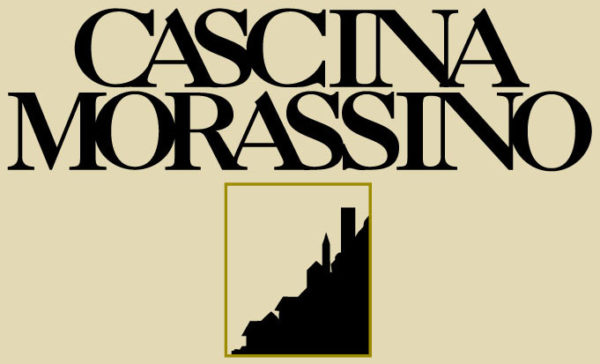
The Estate
Cascina Morassino was established in 1984 following the division of Azienda Agricola Bianco Luigi e Mauro, formerly Bianco Alfredo & Figli. It spans an area of 3.5 ha of vineyards in the village of Barbaresco, official cru Ovello, and 1 ha in the village of Neive. Roberto Bianco, the current owner, runs it with his family, which means he guarantees a personal, dedicated, and consistent approach both in the fields and in the cellars with the goal of creating unique, high quality wines. The vineyards, all facing southeast in Barbaresco and west in Neive at an altitude of 270 m above sea level, are planted with Nebbiolo (4 ha), Barbera (0.3 ha) and Merlot (0.2 ha). The soil is moderately clayey (limestone marl). The recently renovated cellar is equipped with temperature-controlled stainless steel vats: 35-40 hl used for fermentation and storage, 10-28 hl stainless steel vats for storage, and 25 hl oak barrels and barriques for the aging and maturation phases. Annual production is approximately 20,000 bottles.

Barbaresco Morassino
Type of Wine: Barbaresco DOCG
Location: Southeast facing vineyards in the village of Barbaresco
Annual Production: 7,400 bottles
Grape Variety: 100% Nebbiolo
Aging: 18 months in 25 hl oak casks
Tasting Notes: Ruby red color with orange hues and full, round aromas. It is austere on the palate, but the tannins released by the grapes from older vines makes it mellow, soft, and long-lasting on the finish.
Serving Suggestion: Ready to drink a few months after it is bottled. Best paired with meat and game dishes, as well as aged cheeses.
Alcohol: 14.5%
2018 Reviews
“Cascina Morassino is a boutique winery with 3.5 hectares in Ovello and 1.5 hectares in Neive, including the Cottà MGA. This 2018 is open-knit, offering up a smorgasbord of wild rose, violet and peony. It has a Pinot-like lightness with sucrosity, combining a strawberry fruit character and crunchy tannins with acid that carries the finish. Lacking some complexity yet not savouriness. An easy-drinking Barbaresco.” – 90pts, Decanter

Barbaresco Ovello
Type of Wine: Barbaresco DOCG
Location: Southeast facing vineyards in the village of Barbaresco. The grapes used for the Barbaresco Ovello are harvested from the best vineyard with optimal soil composition. A further selection is then made within that vineyard by locating the portions with the ripest and healthiest grapes.
Annual Production: 3,500 bottles
Grape Variety: 100% Nebbiolo
Aging: 22 months in 25 hl oak casks; first 12 months in new wood.
Tasting Notes: Structured, spicy, and complex.
Serving Suggestion: Ready to drink a few months after it is bottled. Best paired with meat and game dishes, as well as aged cheeses.
Alcohol: 15%
2018 Reviews
“From the cooler Ovello in the cool 2018 vintage, this classic Barbaresco is highlighted by developed aromas of smoke, medicinal herbs, violet and earthy minerality. A bony style with firm tannins prevails on the palate, showing some austerity with a blood orange flavour and savoury aftertaste with a touch of mint.” – 93pts, Decanter
2019 Reviews
“The greater concentration of the 2019 vintage compared to 2018 provides a better balance to the cool and austere Ovello cru. Roberto Bianco ages his Barbarescos in traditional large 25hL oak barrels. The wine is smoky with a Pinot Noir-like elegance and dominant flavours of pomegranate and redcurrant. The acidity is firm and austere while the tannins are ripe to the finish. The finish is lengthened by a savoury character with bracing floral notes. Needs more time but will age well.” – 94pts, Decanter
Langhe Nebbiolo
 Type of Wine: Nebbiolo
Type of Wine: Nebbiolo
Location:A west facing vineyard of 0,9 ha planted in 1970 in the village of Neive.
Annual Production: 4,000 bottles
Grape Variety: 100% Nebbiolo
Aging: The fermentation takes place in temperature controlled stainless steel and spends a further 6 months in oak vats.
Tasting Notes: The taste is full, pleasantly tannic and very persistent; fruity notes with hints of vanilla.
Serving Suggestion: It marries well meat based first courses and game as well as cheese.
Alcohol: 13.5%
2019 Reviews: 91pts, Wine Enthusiast
Barbera d'Alba
 Type of Wine: Barbera d’Alba
Type of Wine: Barbera d’Alba
Location: A west facing vineyard of 0,3 ha in the Village of Neive.
Annual Production: 2,000 bottles
Grape Variety: 100% Barbera
Aging: Fermentation and maturation take place in stainless steel, followed by a further refinement of 6 months in bottle
Tasting Notes: Fresh fruit
Serving Suggestion: Best matched with cured meat, stews and full fat cheese.
Alcohol: 13.5%
Crissante Alessandria

The Estate
The six-hectare Azienda Agricola Crissante Alessandria is located in Santa Maria’s Roggeri village which is in La Morra, a municipality in the region of Piedmont. Currently managed by Alberto Alessandria, the third generation of winemakers in his family, the estate only produces red wines: Barolo, Dolcetto d’Alba, Barbera d’Alba, and Langhe Nebbiolo – as well as a Nebbiolo rosé.
The company was officially founded in 1958 by Alberto’s grandfather, Crissante Alessandria, however the Alessandria family has been growing grapes and making wine in La Morra for at least eight generations (which is as far back as the family records go). Crissante and his wife Teresa decided to start making their own wine from the grapes in their family-owned vineyards which until then were mainly sold to the most important historical wineries in Langa. Crissante produced his first Barolo by blending the Nebbiolo grapes from his vines in the Roggeri and Capalot “crus”. Over the years, the company grew by acquiring new vineyards in La Morra. The separate vinification of the Capalot and Roggeri crus began in the 1980s, followed by the Galina cru in 2007. Crissante gradually renewed the wood in the cellar to obtain an appropriate balance between barriques, tonneaux barrels, and classic medium-size casks.
The winery has two separate areas: the vinification and packaging area, and the old underground aging cellar. The vinification is mostly traditional with long fermentations, pump overs, and manual punch-downs, aging in an appropriate balance of small, medium, and large oak containers.
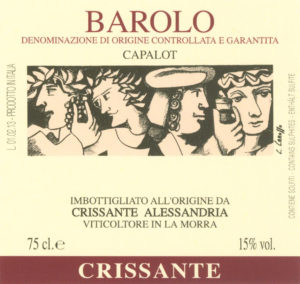
Barolo Capalot
Grape Variety: 100% Nebbiolo
Location: “Capalot” area (south of La Morra)
Soil: Limestone and fine sand
Production Area: About 0.5 ha
Altitude: 300-330 meters above sea level
Exposure: South/east
First Planting: 1951
Total Production: About 4,000 bottles
Vinification: About 2 weeks of maceration in stainless-steel, temperature-controlled tanks (28 degrees); “Follatura manuale” and remontage process 4 times per day for the first 5 days until the end of the pressing process.
Aging: Matured in large, Slovenian oak barrels for 24 months. Bottling between August of the third year after the harvest. Fining in bottle.
Tasting Notes: Intense garnet red. Fascinating aromas of red fruits, blackberries, and plums. Elegant notes of vanilla and mint follow through to a full body, with fine tannins an excellent finish. Fruity aftertaste with hints of vanilla and leather.
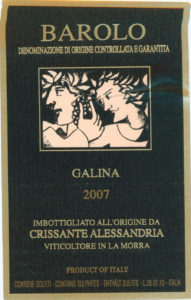
Barolo Galina
Grape Varieties: 100% Nebbiolo
Location: “Galina“ area (south of La Morra Hill)
Soil: Limestone soil with fine sand
Surface Area: About 0.8 ha
Altitude: 280-300 m. slm
Exposure: South
First Planting: 2014
Total Production: About 5500 bottles
Vinification: About 2 weeks of maceration in stainless tanks at 28 degree temperature control; “Follatura manuale” and remontage process 4 times per day for the first 5 days until the end of pressing process.
Aging: In French oak barrels (barriques and tonneaux) of 2.25 and 7q for 24 months. Bottling between August of the third year after the harvest. Then fining in bottle.
Tasting Notes: Intense garnet red. Powerful yet elegant nose with hints of ripe fruits, apricot, and blackberries. Delicate vanilla nuances and licorice. Full-bodied, warm, and well-balanced with soft tannins.
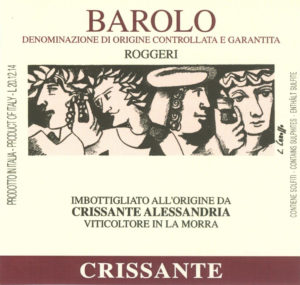
Barolo Roggeri
Grape Varieties: 100% Nebbiolo
Location: “Roggeri” area (south of La Morra Hill)
Soil: Clay with limestone soil
Production Area: About 2.2 ha
Altitude: 280-300 meters above sea level
Exposure: South-south/east
First Planting: 1957
Annual Production: About 15,000 bottles
Vinification: About 2 weeks of maceration in stainless tank at 28 degree temperature control. “Follatura manuale” and remontage process 4 times per day for the first 5 days until the end of pressing process.
Aging: Fining in big Slavonian oak barrels for 24 months. Bottling between August of the third year after the harvest, followed by fining in bottle.
Tasting Notes: Intense garnet color. Wonderful nose of mature fruits like plum, apricot, and blackcurrant. Light aroma of purple flowers. Final hints of spice and truffle. Full-bodied with velvety tannins. Long finish.
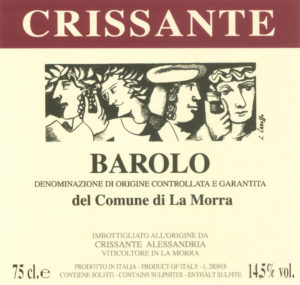
Barolo del Comune di La Morra
Overview: This wine is a blend of 3 crus. 60% from the Ruggieri vineyard (clay and limestone), 20% San Biagio vineyard (light clay and sand), 20% Bettolotti vineyard (near Verduno, light clay and sand).
Production Area: About 2.9 hectares
Altitude: 220-280 meters above sea level
Exposure: ROGGERI – southeast; SAN BIAGIO – south; BETTOLOTTI – east
Average Age of the Vines: 7 – 66 years old
Grape Variety: 100% Nebbiolo
Average Production: 16,000 bottles
Harvest: Manually done the first week of October
Vinification: About 2 weeks of maceration in stainless tanks at a controlled temperature of 26-28°C; punching down and remontage process 4 times per day from the fifth day until the end of fermentation process. Malolactic fermentation takes place immediately after alcoholic fermentation in steel containers at a temperature of 20°C.
Aging: 2 years in Slavonian wood barrels, 1 year in bottle. Normally bottling takes place in June or July of the third year. Refinement for another 9 months in bottle in the underground cellar.
Alcohol: 14.5%
Tasting Notes: Brilliant and vivid garnet color. On the nose, this wine is complex with great freshness. Hints of cherry and ripe strawberry with a background of dried apricot, accompanied by pleasing tarry notes on the finish. Full-bodied, elegant, and refined, with silky tannins that make the palate pleasantly clean.
Cellaring: Great potential for cellaring. Consumption is recommended within 10-15 years of bottling.
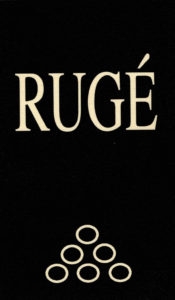
Barbera d'Alba Superiore Rugé
Grape Variety: 100% Barbera
Location: La Morra
Soil: Clay-limestone
Production Area: About 0.4 hectares
Altitude: 250-300 m. slm
Exposure: South/east
First Planting: 1954
Total Production: About 2,000 bottles
Vinification: About 2 weeks of maceration in stainless steel tank at 28 degree temperature control. “Follatura manuale” and remontage process 4 times per day for the first 5 days until the end of the pressing process.
Aging: In French oak barrels (tonneaux) of 7q for 12 months. Bottling usually June of the second year after the harvest. Fining in bottle.
Tasting Notes: Ruby red with garnet nuances. Delivers notes of blackcurrant, licorice, dried cherry, and light incense. Rich and harmonious, full-bodied, with a long aftertaste of ripe, red fruits, vanilla, and licorice. Ideal for cellaring.
Alcohol: 14.5%
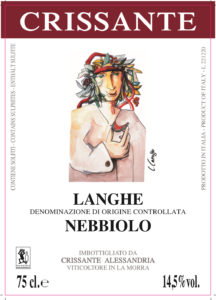
Langhe Nebbiolo
Production Area: La Morra
First Planting: 2009
Alcohol: 14.5% vol.
Soil: Clayey and calcareous soil with clear underlying marl.
Total Surface Area: 0.2 ha
Altitude: 250 meters above sea level
Exposure: East
Harvest: Done manually the first week of October.
Vinification: Fermentation for approximately 10 days in temperature-controlled steel tanks in contact with the skins, frequent pump-overs and punch-downs especially during the first 5 days of maceration. Malolactic fermentation takes place immediately after alcoholic fermentation in steel containers in a heated environment.
Aging: 12 months in 225 liter barrels used for the second time. The bottling normally takes place in June – July of the second year. Refinement for another 6 months in bottle in the underground cellar.
Total Production: Approx. 1200 bottles
Tasting Notes: Ruby red color with bright garnet reflections. The nose has a marked aroma of red fruit, raspberry, apricot, and cherry with floral hints reminiscent of violets. Warm and delicately dry on the palate with great balance. Presence of pleasant tannins, with good body and aftertaste of cherries.
Food Pairings: Goes well with starters, first courses, and meat-based second courses. It is also excellent with fresh and medium aged cheeses.
Cellaring: The wine is designed for immediate consumption but can evolve for at least 7-8 years. Store it in a horizontal position and at a temperature not greater than 18°C.
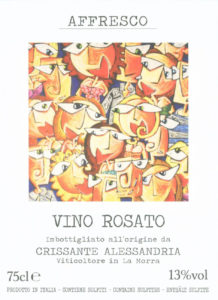
Vino Rosato Affresco
Soil: Marly-calcareous
Altitude: 250-300 meters above sea level
Grape Varieties: 100% Nebbiolo
Vines: Planted in the La Morra plot; exposed to the east, southeast
Production: About 1500 bottles
Vinification: Racking a few hours after pressing and after brief contact with the skins, where a small amount of color is extracted. Long fermentation lasting 3-4 weeks in temperature controlled stainless steel tanks at low temperature in contact with the skins. The wine remains in the stainless-steel tanks for the winter months with exposure to the natural cold. Typically bottled in the spring.
Tasting Notes: Pale pink color tending toward onion skin. On the nose, there are marked aroma of fresh fruit such as raspberries and cherries, complemented by a light floral fragrance. The wine is soft and very harmonious on the palate. Fresh acidity and good taste consistency. Sapid.
Food Pairings: Excellent as an aperitif and with summery foods. It pairs wonderfully with seafood dishes.
Alcohol: 13.5%
Diego Conterno (Certified Organic)
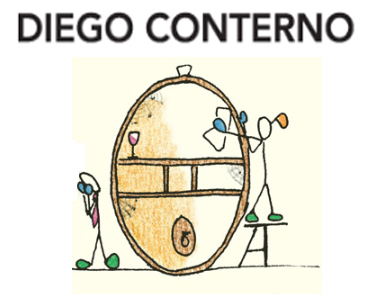
The Estate
To Diego Conterno, wine is passion, interpretation, and art. It reflects the identity of a terroir: in this case, the Langhe of Monforte d’Alba. Diego has been considering the vineyards, the grapes, and the wine from this point of view for over 30 years.
Diego developed his knowledge of wine at the Umberto I School of Enology and also while working under the legendary Piedmont winemaker Beppe Colla of Prunotto. In 1982, he started a successful enterprise with his cousins Claudio and Guido Fantino, which lasted until 2000. With the start of the new century, Diego felt ready to face new challenges. He sold his share of Conterno-Fantina and founded his own winery under his name, bringing with him his vines which included a prime Ginestra plot.
Diego built his winery in Monforte d’Alba on a hill surrounded by vineyards – incidentally just up the slope from the vineyards of Giacomo Conterno (no relation). The estate covers an area of 7.5 hectares, of which 2 hectares are Ginestra vines (the full south-facing portion of the plot called Sori was first planted in 1982).
The first vintage under the label Diego Conterno was 2003. In 2010, Diego’s son Stefano joined the operation, and today he works side-by side with his father cultivating the vines and making the wine.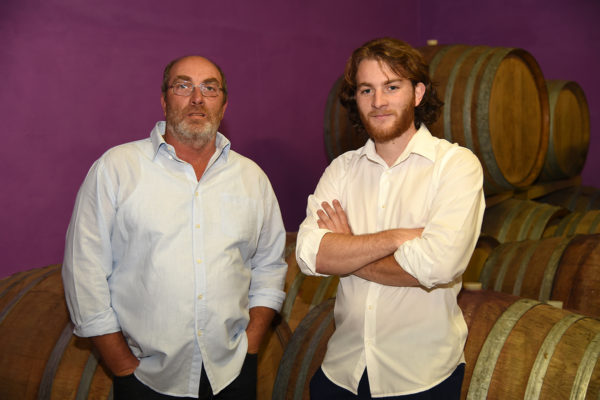
The Conterno philosophy is simple: when you taste a wine, you have to experience the characteristics of the terroir. This is created in the vineyards and finds expression in the grapes. Each wine has its own history and soul, and tells us about a part of the Langhe region of Monforte d’Alba. The wines by Diego Conterno are all organic and represent life: from Dolcetto to Barolo, through Barbera and Nebbiolo d’Alba, the stages of our lives are written in the characteristics of each single wine.
Winemaker: Diego & Stefano Conterno
Total Vineyard Area: 7.5 hectares
Average Annual Production: 50,000 bottles

Barolo DOCG
Overview: A selection of grapes from Conterno’s vineyards in Monforte d’Alba: ‘Bricco San Pietro,’ ‘San Giovanni’ (near the village of Barolo) and ‘Ginestra’ (closer to Serralunga), each vinified separately.
Grape Variety: 100% Nebbiolo
Soil: Clay with limestone marl
Altitude: 960-1,140 feet
Average Age of the Vines: 10-30 years old
Training System: Simple Guyot
Average Production: 45 hl/ha
Harvest: Manual
Vinification: The grapes are fully destemmed, followed by fermentation using indigenous yeasts in a temperature-controlled steel tank.
Aging: Combination of 50 hl oak cask and cement tank for 30 months.
Tasting Notes: Medium-bodied wine with aromas of juicy, red cherries, wildflowers, a hint of menthol, and spice. Well-balanced with fine-grained tannins.
Food Pairings: Pairs well with grilled or braised meats.

Barolo Del Comune Di Monforte d'Alba
Overview: “Comune di” is a new designation for Barolo wines in which 85% of the grapes come from a single “comune” or village. This wine is made from a selection of grapes from the Ginestra Cru. The plots used are Pajana (east – 12 years – 340 m) and Ciabot (south east – 20 years – 300 m) – each vinified separately. The label is inspired by an old bottle (1921) of Barolo Ginestra produced by Conterno Lorenzo, great-grandfather of Diego.
Grape Variety: 100% Nebbiolo
Exposition: Southeast, east
Altitude: 900-1,020 feet above sea level
Average Age of the Vines: 15-20 years old
Soil: Clay, sand, and calcareous marls
Training System: Simple Guyot
Harvest: Manual
Vinification: The grapes are fully destemmed, followed by fermentation using indigenous yeasts in a temperature-controlled steel tank.
Aging: 24 months in 50 hl oak barrels, then 8 months in cement tanks.
Tasting Notes: This medium-bodied wine has notes of cherry pie, dried flowers, orange peel, and warm spice.
Food Pairings: Pairs well with grilled or braised meats.

Barolo Ginestra DOCG
Overview: The Conterno family has owned vines in Ginestra for more than 150 years. This single-vineyard Barolo wine is sourced from the full south-facing portion of Ginestra called Sori.
Soil: Clay with limestone marl
Altitude: 870-990 feet above sea level
Grape Variety: 100% Nebbiolo
Average Age of the Vines: About 35 years old
Exposure: The vineyard Ginestra is to the south in Monforte d’Alba, and is situated on a hill between 300 and 350 meters s.l.m.
Harvest: Manual
Vinification: The grapes are fully destemmed, followed by fermentation using indigenous yeasts in a temperature-controlled steel tank.
Aging: 50 hl oak barrels for 24-30 months, followed by 6 months in cement tank and one year in bottle.
Tasting Notes: Deep garnet in color with an elegant bouquet enhanced with persistent fruity, spicy, balsamic, and mineral notes. Full bodied and charismatic on the palate.
Food Pairings: Pairs well with grilled or braised meats.

Nebbiolo d'Alba DOC Baluma
Overview: This wine is produced from the Ferrione vineyard just outside the Barolo zone and near Monforte d’Alba, on the hill “Bricco Monguglielmo.” The name Baluma means “Let’s dance!” in the local dialect, hence the image of a couple dancing on the label.
Exposition: Southwest
Altitude: 1,500 feet above sea level
Soil: The main elements are clay and limestone marl
Grape Variety: 100% Nebbiolo d’Alba
Cultivation System: Guyot
Harvest: Manual
Vinification: The grapes are fully destemmed, followed by fermentation using indigenous yeasts in a temperature-controlled steel tank.
Aging: Aged in oak tonneaux (500L) for 5 months and 4 months in cement tank.
Annual Production: 55 hl/ha
Tasting Notes: Ruby red in color, with a floral and fruity bouquet marked by notes of violet, strawberry, and cherry. On the palate, it expresses fully ripe fruit and a good balance of tannins.

Barbera d’Alba DOC Ferrione
Overview: This wine is made from grapes grown in the Ferrione vineyard adjacent to the winery in Monforte d’Alba, just outside the Barolo zone.
Grape Variety: 100% Barbera d’Alba
Average Age of the Vines: 10-55 years old
Exposition: Southwest
Altitude: 1,500 feet above sea level
Soil: Clay and limestone marl
Training System: Guyot pruning
Harvest: Manual
Vinification: The grapes are fully destemmed, followed by fermentation using indigenous yeasts in a temperature-controlled steel tank.
Aging: 4 months in 500 liter oak barrels followed by 6 months in cement tank so that the acidity and flavor of the classic Barbera can combine to create a fantastic, well-balanced wine.
Average Production: 55 hl/ha
Tasting Notes: Fresh notes of vibrant red fruit and warm spices in the bouquet. Medium-bodied and well-balanced, with fine-grained tannins.
Food Pairings: Grilled and braised meats; pasta with tomato-based sauces.

Dolcetto d'Alba DOC
Overview: The Dolcetto (meaning “little sweet one”) comes from the vineyards in Bricco Monguglielmo of Monforte d’Alba. It is a wine that is best when consumed young, however, its rich aromas are maintained with age which allows this Dolcetto to be appreciated even 2 years after bottling.
Grape Variety: 100% Dolcetto d’Alba
Average Age of the Vines: 10-55 years old
Exposition: South, southwest
Altitude: 1,500 feet above sea level
Soil: Clay, calcareous marl, and tufa
Cultivation System: Guyot
Harvest: Manual
Vinification: The grapes are fully destemmed, followed by fermentation using indigenous yeasts in a temperature-controlled steel tank.
Aging: 6 months in steel and cement tanks.
Annual Production: 50 hl/ha
Tasting Notes: Ruby red with violet hues; the nose is vinous, intense. Notes of red fruit, licorice, and warm spices.
Food Pairings: Pairs well with appetizers, grilled meats, and pork ribs.

Langhe Bianco Nascetta
Overview: Nascetta is the only real indigenous white grape variety from Langhe! In the past, it was mainly used to make sweet wines, usually for religious purposes, but its lovely aromatic complexity makes it ideal for a dry white wine. This wine is a selection from two estate vineyards: Ferrione, on a hillside facing west/southwest; and Ginestra, facing east, in Monforte d’Alba.
Grape Variety: 100% Nascetta
Average Age of the Vines: 10 years old
Exposure: West of the town of Monforte d’Alba, on a hill about 400 meters above sea level
Altitude: 1,440-1,500 feet above sea level
Soil: Medium texture clay with tuff and limestone marl
Harvest: Manual, with selection in the vineyard at the end of September to the beginning of October
Vinification: Two days maceration on skins; pressed then fermented with indigenous yeasts in temperature-controlled tank. Malolactic conversion is blocked.
Aging: 6 months in steel tanks.
Tasting Notes: This wine fully expresses the characteristics of its indigenous landscape. The color is a brilliant bright yellow. The savory and minerally flavors on the palate are accompanied by notes of citrus, pineapple, sage, and rosemary.
Serving Suggestion: Ideal as an aperitif, or paired with sheep cheeses, fish, or white meat. To be consumed young, but also has excellent cellaring potential. Its longevity allows long aging in the bottle with interesting evolutions in flavor.

Barolo Le Coste di Monforte
Overview: This is the flagship wine of the estate, made with grapes obtained from the cool and windy site of Le Coste di Monforte d’Alba, at the southern edge of the Barolo zone. The vineyards face to the south and the grapes give the Barolo Nebbiolo vital tannins, structure, and significant body.
Grape Variety: 100% Nebbiolo
Average Age of the Vines: 30 years old
Exposition: South
Altitude: 1,200 feet above sea level
Soil: Clay and calcareous marl
Cultivation System: Guyot
Harvest: Manual
Vinification: The grapes are fully destemmed, followed by fermentation using indigenous yeasts in a temperature-controlled steel tank.
Aging: Aged in a combination of 50 hl oak casks and cement tank for 30 months.
Annual Production: 45 hectoliters per hectare
Tasting Notes: Notes of wildflowers, rose, cherry, menthol, and spice in the bouquet. Medium-bodied and structured with ripe tannins on the palate.
Food Pairings: Pairs well with grilled or braised meats.
Diego Morra (Organic)
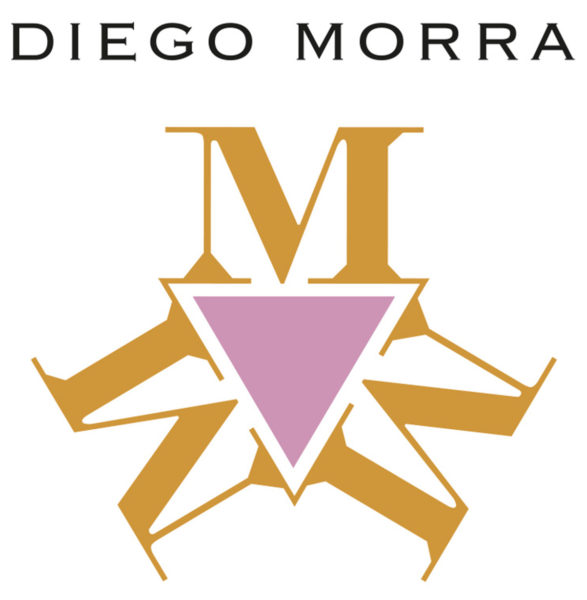
The Estate:
The Diego Morra family is on its third generation of winegrowers. They are proud of their roots and history – always looking forward, but with one eye on the past.
The family originally acquired their first little piece of land in the mid-20th century, but today, the estate spans 30 hectares (75 acres) of vineyards in the municipalities of Verduno, La Morra, and Roddi, plus 20 hectares (50 acres) of hazelnut trees. The family home is called Cascina Mosca. Located in Mosca di Verduno – in the heart of Monvigliero, Verduno’s most important vineyard, it is the headquarters of the Diego Morra operation.
The Terroir:
Monvigliero – a piece of velvety smooth hillside; a gentle, rolling amphitheater with slopes that are caressed by the cool morning sun, bathed in its midday heat, and restored as it sets.
The soils convey striking aromatics, elegance, and the fullest expression of the terroir to the grape that reigns supreme on this hillside: Nebbiolo. Thanks to the unique character and quality of the vineyard, Monvigliero has been recognized as a Barolo subzone.
4 of the 16 hectares of Nebbiolo used to produce Barolo are cultivated passionately by Azienda Agricola Diego Morra and are cradled here in this harmonious combination of soil, microclimate, and perfect exposure.
The Vineyards:
The vineyards are the true heritage of Diego Morra. Located in the finest portions of Verduno, La Morra, and Roddi, they are mostly planted with Nebbiolo, however they do also grow other typical regional varieties: Dolcetto, Barbera, and Verduno’s unique Pelaverga.
The vineyards extend around the entire hillside, enjoying the benefits of the unique slopes, soil composition, exposure, and microclimate.
Each vineyard is tended meticulously – they use a pruning system that is aimed at limiting grape yields, as well as organic fertilizer. They use an organic system of fertilizing the vineyards aimed at maintaining soil health, and apply the principles of integrated vineyard management to combat pests and diseases.
The Cellar:
The estate draws inspiration from traditional winemaking and aging techniques, while constantly investing in modern technologies to guarantee product quality and a safe working environment.
The architecture of the underground aging cellar allows for the transfer of wine via gravity instead of mechanical transfer. It also has natural climate control due to its coolness and humidity.
The grapes are harvested by hand, then left to cool for a period of time prior to fermentation in order to preserve their natural aromas. The winemaking team does everything they can in the cellar to maximize the characteristics of the grapes, vinifying each variety separately.
Some of the wines are aged in wood, following tradition, in large casks and tonneaux. The elegance of oak helps the wine offer its finest sensory expression, while remaining true to its terroir of origin.
The Team:
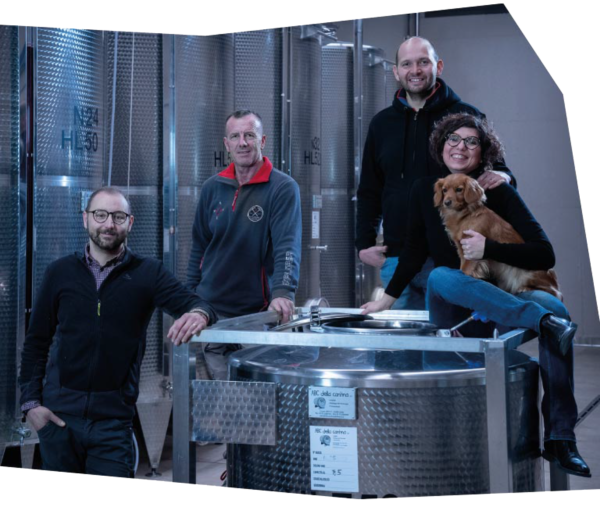
DIEGO (Winemaker) – His place is everywhere, although his greatest desire would be to spend the day among the vines where he grew up. He sets himself new goals and challenges every day, with curiosity, creativity, and humility. Always attentive to everyone and everything.
DAVIDE – A passionate oenologist. The cellar is his second home. He takes care of the wines the way he does his children, with dedication, patience, and great attention.
FIDAN – He coordinates work in the vineyard and helps out in the cellar. He is always ready to take on any job with a smile and lots of enthusiasm.
FRANCESCA – She splits her time between administration and hospitality. With a marked sense of duty and precision, she is always eager to talk and share. Meeting visitors is what she loves best and she devotes considerable attention to every single detail when organizing these meetings.

Verduno Pelaverga
Vineyard Location: Village of Verduno & La Morra
Appellation: Verduno Pelaverga DOC
Production Area: 2 hectares (5 acres)
Grape Variety: 100% Pelaverga Piccolo
Harvest: Manually done the last 10 days of September.
Vinification: Fermentation and maceration in stainless steel tanks at a controlled temperature of no more than 25°C for 6-8 days.
Aging: The wine is aged in stainless steel tanks for 4 months before bottling. It then remains in bottle for at least 2 months prior to release. Bottled in April or May following the harvest.
Tasting Notes: This is a wine with great olfactory richness: strawberry and raspberry fruit complemented by spicy notes, in particular very marked accents of white pepper.
Food Pairings: This highly versatile wine goes well with cured meats and aged cheeses, and with first and second courses.
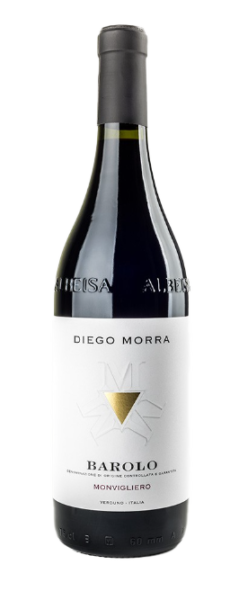
Barolo Monvigliero
Vineyard Location: Village of Verduno
Production Area: 4 hectares (10 acres)
Grape Variety: 100% Nebbiolo
Harvest: Manually done the first 20 days of October.
Vinification: Fermentation and maceration in stainless steel tanks at a controlled temperature of no more than 30 °C for 30-35 days.
Aging: The wine is aged partly in 500 L oak tonneaux, and partly in 25 HL oak barrels for a total of 30 months, followed by at least 6 months in bottle. Bottling takes place at the beginning of the fourth year following the harvest.
Tasting Notes: Monvigliero is one of the most historic Crus of Barolo, famed for its olfactory richness. The wine is very perfumed and aromatic, with complex notes of rose, ripe red and dark fruits, and a marked spice character. The finish is very long, savory and beautifully structured.
Food Pairings: The tenderness and elegance of this wine is best accompanied by second courses of meat or aged cheeses. Sipped at the end of a meal with pieces of dark chocolate, it becomes the seal of an excellent meal in Langa.
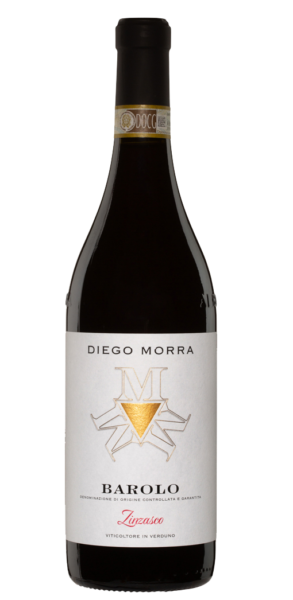
Barolo Zinzasco
Grape Variety: 100% Nebbiolo
Vineyard Location: Village of Verduno, La Morra
Production Area: 12 hectares (30 acres)
Harvest: Manually done the first 20 days of October.
Vinification: The grapes from the vineyards in Verduno and La Morra are vinified together. Fermentation and maceration in stainless steel tanks at a controlled temperature of no more than 30°C for 20-25 days.
Aging: The wine is aged partly in 500 L oak tonneaux, and partly in 25 HL oak barrels for a total of 24 months, followed by at least 6 months in bottle.
Tasting Notes: The grapes from the different subzones of La Morra and Verduno bring a wide range of characteristics to the wine, offering scents that range from sweet and floral, to fruity, savory and spicy. The wine shows great complexity and has a fine structure.
Ghiomo
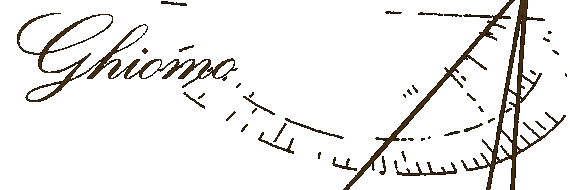
The Ghiomo estate, first established in the early 1800’s, takes its name from a tool used to construct the wooden wine barrels. The estate is situated in Guarene which lies between Langa and Roero, just 2 kilometers from Alba, home to many world famous wines and white truffles. The vineyards are very similar in characteristics and altitude to those of La Morra, in the heart of Barolo. The soils are rich in grey marl, clay, and a little sand, leading to wines that express great texture and character. It is the choice of the estate to only cultivate native vines such as Nebbiolo, Barbera, and Arneis. Ghiomo takes particular pride in the fact that their wine is so deep-rooted in their long-standing country traditions.
Strictly traditional growing methods are followed in the vineyard. Though they do not like to be defined as biodynamic, organic, or conventional growers, for several years now the Regional Crop Farming Project 2078/92 (designed to reduce the use of chemical fertilizers and pesticides) has been followed by Ghiomo to guarantee that the grapes and the wines themselves are as natural and expressive of the terroir as possible.

Arneis di Langhe Inprimis
Location: This wine is produced from the meticulous selection of grapes from the vineyard “Fusòt”, which faces south-east and grows on a marly soil.
The Vines: The vineyard is cultivated according to the classical Guyot method, with short trimming. The fruit is thinned out by 30-40%, allowing the vines to produce about 1.8 kg of fruit per vine.
Vinification: The grapes are harvested when the ideal balance between acidity and sugar is reached, and are afterwards stored in cold temperatures for approx 20 days in order to increase the aromatic precursors which develop later on when pressing and steeping the skin. The fermentation is conducted under a controlled temperature.
Aging: The wine rests in steel tanks until bottling. A prolonged “battonage” of the fine dregs takes place before bottling.
Tasting Notes: Intense straw color with pale green reflections. A rich, fresh, complex, fruity, and seductive bouquet with delicate floral hints (yellow flowers), a tomato leaf note, and juicy aromas of peach and melon. The palate is pleasantly dry with a tasty, long-lasting aftertaste.
Food Pairings: Excellent aperitif, also ideal with fresh and saltwater fish, shellfish, fresh hors d’ouvres, and marinaded vegetables and meats.
Storage & Serving: To be served fresh. Decant at least 30 minutes before serving. Thanks to its particular wine-making process, it is a wine suitable for bottle aging in a dark and cool place.

Arneis Langhe Fussòt
Location: From 2 different vineyards: “Fusòt” and “Gheja”, which face south and grow on a marly soil.
Viticulture: Both vineyards are cultivated according to the classical Guyot method, with short trimming. By thinning out the fruit by 15-20% should produce about 2 kg of fruit from each vine.
Vinification: The grapes are harvested when the ideal balance between acidity and sugar is reached. The pressing follows, dividing skin from must.
Aging: The wine rests in steel tanks until bottling, which happens in the first months of spring.
Tasting Notes: Intense straw color with pale green reflexes. A delicate, complex and seducing bouquet with floral hints (broom and camomile), a fresh, fruity flavor of peach or pineapple. The taste is pleasantly dry with a lightly sweet hint, which gives a fresh and long lasting aftertaste.
Food Pairings: Excellent with river fish and shellfish. It’s at its best served with marinade meats and fish.
Serving Suggestion: Allow to decant at least 30 minutes before serving.
Cellaring: It is possible to age this wine for up to 2 years.

Nebbiolo di Langhe Vigna Grande
Location: This wine is produced from 3 different vineyards in Guarene: Vigna Granda, Vigna Bursa, and San Lusè.
The Vines: The vineyards are cultivated according to the classical Guyot method, with medium-short trimming. The fruit is thinned out by 20-25%, allowing the vines to produce about 1.8 kg of fruit per vine.
Vinification: The grapes are harvested when completely mature and put into small-perforated containers which hold up to 20 kg. When needed, the fruit is selected by inspecting each bunch individually in order to collect the very best. Within a few hours after the grapes have been harvested, they are transported to the winery and the pressing follows. The fermentation is conducted under a controlled temperature of 28° C following frequent and delicate pumping over. The steeping on the dregs of pressed grapes is medium long (about 200 hours). The new wine is put into stainless steel vats, where new malolactic fermentation spontaneously follows.
Aging: The Langhe Nebbiolo rests for 12 months in oak casks, and then in steel tanks. Afterwards follows a 2-month bottle-aging.
Tasting Notes: Intense, brilliant ruby red color with a floral and fruity bouquet, fresh and delicate. On the palate, it reveals an elegant, tasty, rich, tannic, and persistent taste with a slightly bitter aftertaste.
Food Pairings: Ideal with hors d’oeuvres or light main courses with white meat. Excellent with delicate cheeses.
Storage & Serving: The bottle should be stored in a horizontal position and it is recommended to decant at least 2 hours before serving. The ideal serving temperature is 18° C. This wine has good cellaring potential.

Nebbiolo d'Alba Sansteu
Location: This wine is produced from the vineyards of Sansteu and Fusot, which face south-east and grow on marly soils.
The Vines: The vineyards are cultivated according to the classical Guyot method, with short trimming. The fruit is thinned out by 25-30%, depending on the age, allowing the vines to produce about 1.5 kg of fruit per vine.
Vinification: The grapes are harvested when already slightly overripe and put into small-perforated containers, each containing up to 20 kg. When needed, the fruit is selected by inspecting each bunch individually. Within a few hours after the grapes have been harvested, they are transported to the winery, followed by pressing, and a light, carbonic cold steeping. The fermentation is conducted under a controlled temperature of approx 30°C following frequent and delicate pumping over. The steeping on the dregs of pressed grapes is long (about 300 hours). The new wine is kept in stainless steel tanks under a controlled temperature for the final alcoholic fermentation and the spontaneous malolactic fermentation.
Aging: The Nebbiolo d’Alba rests for 12 months in oak casks and then a further 6 months in the bottle in order to blend the great structure of this wine.
Tasting Notes: Intense, ruby red color with a fruity, fresh, and vinous bouquet. Full-bodied and well-structured. Blended with a slight hint of oak. Very intense, round, and persuasive aftertaste.
Food Pairings: To be served with flavorsome main courses, game, and aged cheeses.
Storage & Serving: The bottle should be stored in a horizontal position and it is recommended to decant at least 3 hours before serving. The ideal serving temperature is 18-20°C. This wine has excellent cellaring potential and it is suitable for long bottle aging.

Barbera d'Alba Ruit Hora
Location: This wine is produced from a selection of Barbera and Nebbiolo grapes from vines that have only the very best exposure to the sun.
The Vines: The vineyards are cultivated according to the classic Guyot method, with short trimming. The production is 1 bunch of fruit to each vine.
Vinification: The grapes are harvested when already slightly overripe and put into small-perforated containers, each holding up to 10 kg. When needed, the fruit is selected by inspecting each bunch individually. Within a few hours after the grapes have been harvested, they are transported to the winery and put into a proper room for 24 hours, where they slowly begin to dry out. After that, the grapes are separated from the stalks and pressed. The fermentation is conducted under a controlled temperature of approx 34°C following frequent and delicate pumping over in addition to manual punching down. The steeping on the dregs of pressed grapes is long (about 250 hours). The new wine is put into oak barriques, where the spontaneous malolactic fermentation follows.
Aging: The Ruit Hora rests in oak for 14 month at first, followed by 3 months in steel tanks and 6 months in the bottle.
Tasting Notes: Dark red color with purple reflections, and a bouquet of red fruit. Marked but well-balanced hints of oak. On the palate, it reveals a rare strength. It is full-bodied with great tannic structure. Mellow and extremely long aftertaste. This is a wine for meditation with excellent cellaring potential.
Food Pairings: Ideal served with red meat, game, and aged or spicy cheeses.
La Gironda di Galandrino – Asti (Organic)
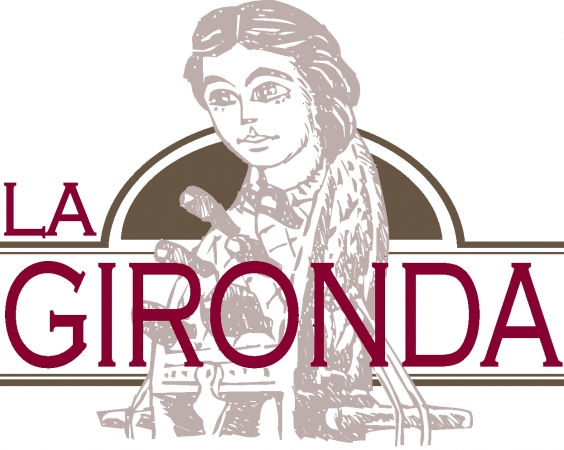
The Estate
The family history of Susanna Galandrino, winemaker at La Gironda, is inextricably linked to wine, to vines, and to the hills, where her grandparents toiled for all their lives, followed by her father in his youth.
In the year 2000, Susanna and her husband decided to go back to their roots and now she and her husband work full-time, cultivating their vineyards and producing their own wine.
Great care was taken in the choice of the vineyards, as location is an essential factor for the production of superior wines. La Gironda lies in the very heart of Monferrato, at the center of the most important and prestigious wine-making area in the Asti district, at an altitude of about 200-400 meters above sea level where the soil, the vines, the climate, the culture, and the tradition come together to express the “terroir,” one of the most important in the region of Piedmont. Nizza is the name of the town where the estate is situated, and it is now also the name of the new appellation Nizza DOCG-the area of excellence for the Barbera d’Asti (the Nizza production area is strictly limited, from the cultivation and oenological viewpoint). They also produce Moscato d’Asti DOCG, Brachetto d’Acqui DOCG, Piemonte DOC Sauvignon, and Monferrato DOC.
Even though La Gironda is a relatively new winery, the Azienda Agricola La Gironda has already won a whole array of awards and their wines are on all the most important Italian wine guides, as well as being appreciated on the international stage.
The winemakers cultivate and tend the 7 hectares of vines with maximum respect for the environment. They use only traditional techniques in the winery, with minimum technology, and the vines are only treated with product based on copper or sulfur, with no use of herbicides to clear the ground beneath the vines. For this and other systems that are in place, the winery has obtained the ISO14001 Certificate. This commitment on the part of the estate reflects its drive towards product excellence and environmental sustainability.
The aim of the winemakers is to produce the best wine they can in the simplest, most natural way possible so that it is the true expression of where they live and work: Nizza, the heart of Piedmont!

Barbera d’Asti La Lippa
Vinification: De-stemming and gentle pressing of grapes. Fermentation in stainless-steel, temperature-controlled vats at a temperature of 28-30ºC. The wine is drawn off after 7 days and the first decanting occurs 10 days afterwards. After the second decanting, this wine is stored in stainless-steel vats, where the malolactic fermentation takes place.
Tasting Notes: A young, uncomplicated Barbera, perfect for serving cool in summer. Aged in steel to maintain its young and lively taste, it’s no mere coincidence that La Lippa is named after a childhood game. Ruby red with purple highlights, it has an intense scent of red fruit and a dry, tangy flavor – for carefree drinking.
Food Pairings: Perfect with bread and salami, it pairs with all rice, pasta, and ethnic dishes. Ideal with pizza or a barbecue with friends. For something surprising, try with fish, especially in soups!

Brachetto d’Acqui
Vinification: Soft pressing of grapes. The skins remain in contact for 48 hours. The must is decanted and conserved at a low temperature. Re-fermentation in “autoclave” at a controlled temperature, until it has reached 6% alcohol by volume. Sterile bottling through filtration.
Tasting Notes: It has a very charming pale red color with soft violet hues. Typical aromatic Brachetto grape bouquet, light musky scent with hints of rose. Its taste is sweet, sapid, recalling the fruity character of the fragrance, with good structure and a long lasting finish.
Food Pairings: Suitable with all desserts, especially with fruit tarts, wild berries, syrupy fruit, and cookies (above all “amaretti” typical cookies of Piedmont)
Serving Temperature: 10ºC

Barbera d’Asti La Gena
Vinification: De-stalking and soft pressing of grapes. Fermentation in stainless-steel, temperature-controlled vats at a temperature of 28-30ºC. The wine is drawn off after 7 days and the first decanting occurs 10 days afterwards. After the second decanting, this wine is stored in stainless-steel vats, where the malolactic fermentation takes place.
Tasting Notes: Deep ruby-red color with violet reflections. Intense, characteristically fruity bouquet. Warm in the mouth, full-bodied, well-balanced, with a good structure and a long lasting finish.
Food Pairings: Perfect for red meat dishes, roasts, braised meats, wild fowl and game. It goes well with full-fat and ripe cheeses.

Moscato d’Asti
Vinification: Soft pressing of grapes, skins off. The must is decanted and conserved at a low temperature. Re-fermentation in “autoclave” at a controlled temperature until 5.5% alcohol by volume is attained. Sterile bottling through filtration.
Tasting Notes: Straw-yellow color. Typically aromatic. Moscato grape bouquet, intense with hints of flowers. Its taste is sweet, sapid, aromatic with light trace of (salvia). Rich with good structure and a long lasting finish.
Food Pairings: It goes with all desserts, especially with hazel-nut cake and zabaione cream. It can be drunk also in the afternoon especially during the warmer seasons.
Serving Temperature: 8ºC

Barbera D’Asti Superiore Nizza DOCG Le Nicchie
Exposition: South-Southwest
The Appelation: Nizza is a denomination that represents a zone of particular quality of Barbera d’Asti Superiore, that can be produced only in 18 communes (NIZZA monferrato and 17 villages all around) among the 169 where Barbera d’Asti can be produced. The production surface area is limited, from the cultivation and oenological viewpoint (the location of this land must be on a hillside facing SSW-SSE, the grape yield is 7 tonnes/hectare – while for Barolo wine, it is 8 tonnes/hectare-minimum aging of 18 months starting from January following the harvest, at least 6 months in wooden casks). From vintage 2014, this appellation of special quality will be called “Nizza DOCG.”
Grape Varietal: 100% Barbera of the “sottozona” Nizza
Yield: 7 tonnes per hectare
Vinification: Destalking and soft pressing of grapes. Fermentation in stainless-steel, temperature-controlled vats at a temperature of 28 °C. The wine is drawn off after 7 days and the first decanting occurs 10 days afterwards. After the second decanting, the wine is stored in stainless-steel vats, where the malolactic fermentation takes place. When the malolactic fermentation is terminated, the wine is left to refine in French-oak casks (225-500L) after which it is bottled. Following the bottling, the wine is left to mature in the cellars for 6 to 12 months.
Tasting Notes: Ruby-red color with purple hues. A suitably intense bouquet of red berries and syrupy fruit with traces of tobacco and cacao. Warm in the mouth, full-bodied, light tannins, a good structure, and long lasting.
Food Pairings: Rich and succulent first courses, main courses of red meat roasts, boiled meat, braised meat, wild fowl and game. It goes well with savory, full-fat, and ripe cheese. And, of course, this wine is perfect just for the pleasure of drinking a glass of good wine!

Pel Di Carota Macerato Bianco
Grape Varieties: Sauvignon Blanc, Chardonnay, Cortese. This wine is produced with grapes obtained from certified organic vines.
Harvest: The ripened grapes are hand-picked in mid-August and placed in crates weighing about 18kg each.
Vinification: Destemming of the grapes and fermentation of the must in contact with the skins. The skins are left to macerate for a period of about 2 weeks, followed by a gentle pressing. At the end of fermentation and after a period of resting on the lees, the dregs are removed. No added sulfites.
Tasting Notes: This wine has a very particular orange/yellow color. The nose has hints of ripe white fruit (especially apple), but also apricot, candied fruit, and honey. Additional notes of aromatic herbs and light, sweet incense. Delicate tannins on the palate (due to prolonged contact with the skins) and a beautiful structure. Very light acidity, with aromatic hints of ripe pink grapefruit and dried fruit on the finish.
Food Pairings: This wine goes nicely with vegetables and fish in tempura, sushi, soups, and fish stew. Also delicious with curries, dishes with mushrooms and truffles, and flavorful, aged cheeses.
Socré

The Estate
For a long time, Socré exclusively sold their grapes to local farmers who made wine for their own enjoyment, as well as to neighboring wineries. Since 1999, they have ramped up their wine production exponentially and brought the winery into the 21st century.
This small estate owns vineyards in Roncaglie, one of the Grand Crus of Barbaresco D.O.C.G. area. The vines (with ages ranging from 10 to 50 years) are planted with a density ranging from 4,500 vines per ha up to 6,000 vines per ha.
Owners: Marco, Giulio, and Lorenzo Piacentino
Winemaker: Fabrizio Torchio
Production Area: 7.5 hectares of vineyards in Barbaresco, Piedmont – Roncaglie

Barbaresco
Overview: Socré’s flagship wine
Grape Varietals: 100% Nebbiolo
Exposition: South, Southwest
Altitude: 240-280m a.s.l.
Soil: Clayey with limestone
Training System: Guyot – 5000 vines/ha
Plantation Year: 1966, 2000
Yield: 1.4 kg/vine; 50 hl/ha
Harvest: October
Fermentation: Done in 25 hl vats of French oak and 30 hl stainless steel vats at a controlled temperature of 29°C
Maceration: Lasts 14 days with pumping over and pigeages
Aging: 18 months in French oak used barriques (2nd and 3rd passage) + 6 months in concrete vats
Bottle Aging: At least 6 months
Residual Sugar: < 1 g/l
Alcohol: 14%
Annual Production: 35,000 bottles
2019 Reviews: “Ripe and heavily extracted with mouth-puckering tannins supported by a sweet core of red apple, violet and cranberry.” – 91pts, 2022 Decanter World Wine Awards
2018 Reviews: “A more traditional style with high acidity and dry tannins. Lifted red cherry, sour plums, a touch of anise and truffle.” – 90pts, 2021 Decanter World Wine Awards
2016 Reviews:
“Balsamic aromas of camphor mingle with scents of pressed rose, vanilla, dark-skinned berry and a whiff of dried aromatic herb and game. On the focused palate, fresh acidity and taut, fine-grained tannins frame dried Morello cherry, sage and star anise. It’s balanced, with firm acidity.” – 93pts, Editor’s Choice, Wine Enthusiast
“Architect Marco Piacentino owns this small property and produces two Barbaresco bottlings, of which this is the regular one. All the same, it packs a punch with its dense cherry aromas, suave texture and full-bodied, weighty structure with grip and concentration. Solid and chewy, it’s not showing much finesse but should age well.” – 92pts, Decanter
2015 Reviews:
“Ripe dark-skinned berry, fragrant blue flower, camphor and exotic spice aromas leap out of the glass. The palate is full bodied but also shows restraint, offering dried black cherry, truffle and licorice alongside taut close-grained tannins. You’ll also detect the warmth of alcohol on the close.” – 91pts, Wine Enthusiast
“Socrè’s 2015 Barbaresco is a big, potent wine. Wild cherry, tobacco, dried flowers, and mint are all nicely delineated. Some of the initial intensity tapers off, which in turn gives the wine a good bit of approachability. This is a solid effort in its peer group.”-90pts, Vinous
Awards: Silver Medal DECANTER World Wine Awards 2022

Barbaresco Roncaglie
Grape Variety: 100% Nebbiolo
Aging: 12-15 months in French oak barrels (225 liters) of which one-third is new, and 12 months in large oak casks (20 hl). Refinement continues in the bottle for at least other 12 months before sale.
Tasting Notes: The color is a deep, garnet red. Elegant bouquet of violets with accompanying balsamic, mint, and cherry jam notes. The palate is soft and smooth with dense and silky tannins. This is the perfect wine for special occasions.
Alcohol: Between 14.0 and 14.5% vol.
Dry Extract: Higher than 30 g/liter
Cellaring: Great potential for aging (at least 20 years)
Serving Suggestion: Best consumed at 18-19°C in large crystal glasses. Recommended pairings are roast red meat and wild game.
2014 Reviews: “Pipe-tobacco, blue-flower and menthol aromas escape the glass along with an earthy hint of cured meats. It’s linearly structured and racy, offering crushed raspberry, strawberry compote and licorice along with an earthy hint of game on the salty finish. Fine-grained tannins provide support.” 90pts, Wine Enthusiast
2011 Reviews: “The 2011 Barbaresco Roncaglie is darker and more powerful than the estate’s straight Barbaresco. A powerful, structured wine, the 2011 opens up with hints of savory herbs, smoke, tobacco and menthol, all of which add nuance to the direct, expressive fruit.”-92pts, Vinous
2010 Reviews: “The mix of cinnamon, cherry, licorice and tar flavors shows complexity, while the firm, dense structure provides support and drives the finish. The lingering finish comes back with sweet fruit and spice notes.” – 92pts, Wine Spectator

Cisterna d'Asti De Scapin
Overview: Croatina, widespread in the relatively far region of Oltrepò Pavese, is a grape variety that is little cultivated in Piedmont; its presence is largely restricted to Tortona, High Piedmont, and in the district of Cisterna d’Asti (between Monferrato and Roero, and on the border of the province of Asti and Cuneo). Traditional wine of Cisterna d’Asti has an intense purplish red color, and has a characteristic astringent aftertaste. De Scapin is produced as a still wine, although the specification allows for the possibility of a lively sparkling version, with 100% of the Croatina grapes coming from the municipality of Cisterna d’Asti, in Varija Bellegardo.
Name: “De Scapin” references the surname of the owners’ mother, Rosella. She was born in Cisterna d’Asti and contributed greatly in the creation of the DOC specification of the wine. Her surname is actually Scapino, but in the day-to-day use in Cisterna, where Piemontese dialect is often used, her surname becomes De Scapin (meaning “of the Scapino family”).
Production Area: Cisterna d’Asti – Monferrato – Piemonte
Grape Variety: 100% Croatina
Exposition: South, southeast
Altitude: 250-270 meters above sea level
Soil: Sandy clay with limestone
Training System: Guyot
Plant Density: 5,000 vines/ha
First Planting: 2001
Average Yield: 1.2 kg/vine; 42 hl/ha
Fermentation: In 30 hl stainless steel vats at a controlled temperature (within 30 degrees). Maceration lasts 15 days with pumping over and pigeages.
Aging: 18 months in used French oak barriques (2nd passage + more) plus 12 months in stainless steel vats. Bottle aged for 12 months at least.
Tasting Notes: Purplish red in color, almost impenetrable. Fruity with vegetable notes. Soft texture and deep, sustained body with evident tannins. This is a wine of great class and immediate pleasure.
Food Pairings: Pairs well with rich dishes (cheeses, meats) that are enhanced by the tannins of the wine.
Residual Sugar: < 1 g/l
Alcohol: 14.5%
Dry Extract: Higher than 30 g/l

Langhe Freisa
Production Area: Langhe
Grape Varieties: 100% Freisa. Freisa is a red grape variety grown in mainly in the Piedmont region of Italy, and is a genetic parent grape to the Nebbiolo variety.
Exposition: East
Altitude: 240 m a.s.l.
Soil: Clay with limestone
Training System: Guyot – 5,000 vines/ha
First Planting: 1990
Yield: 1,4 kg/vine; 49 Hl/ha
Harvest: Last week of September
Fermentation: Done in 30 hl stainless steel vats at an uncontrolled temperature (within 30°C). Maceration lasts 15 days with pumping over and pigeages.
Aging: 12 months in only used barriques and 6 months in stainless steel vats. Bottle aging for at least 6 months.
Residual Sugar: < 1 g/l
Alcohol: 14%



